Hofjes aan de grachten
Grill's Hofje
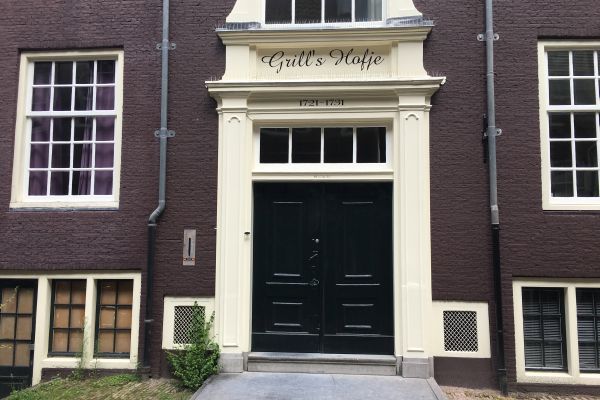
Eerste Weteringdwarsstraat 19-35
Open: daily 7am - 7pm
Between the Spiegelgracht and Weteringstraat we find Grill's Courtyard. The name can be found above the framed entrance door at number 19. This courtyard is characterized by the old lantern that adorns the outer wall and the 18th century clock a door further. In the regents' room, above the marble chimney, we find the names and dates of the benefactors of this courtyard: Anthonie and Elizabeth Grill, married October 20th 1693. The courtyard had 8 downstairs and 8 upstairs apartments, intended for a total of 32 women; two ladies lived in each one-room house. Already in 1850, the older ladies each received the modest luxury of their own room. Later, electricity and a working water pipe were also installed. However... the residents still had to go to the courtyard to go to the toilet.
Looiershofje
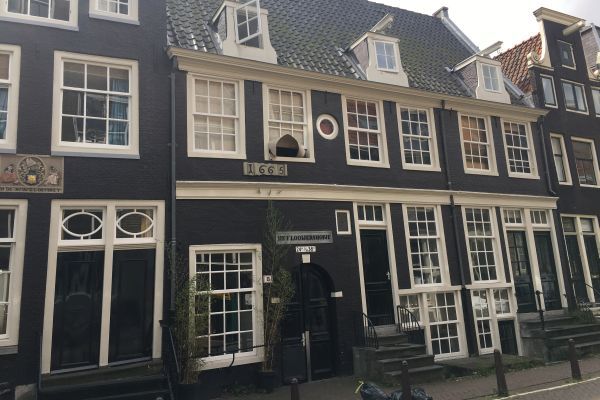
Nieuwe Looiersstraat 20-40
Open: yes, opening hours unknown
Those who enter the Nieuwe Looiersstraat via the Vijzelgracht will see the row of three-century-old houses, just around the corner. On the facade is the year 1665 and on the house hangs a plaque with the name "De niwe Loeyerey" on which you see tanners at work. The houses on the street side do not belong to the courtyard. The year 1829, which is under the name of the courtyard, is the year in which the courtyard was established. Unlike other courtyards, this one was not intended for the elderly, but the cottages served as private rental homes. The houses are one room each. In 1850 Lady Elias was in charge of this courtyard, a masonry stone with an inscription bearing her name is still witness to this.
Hodshon-Dedelshofje
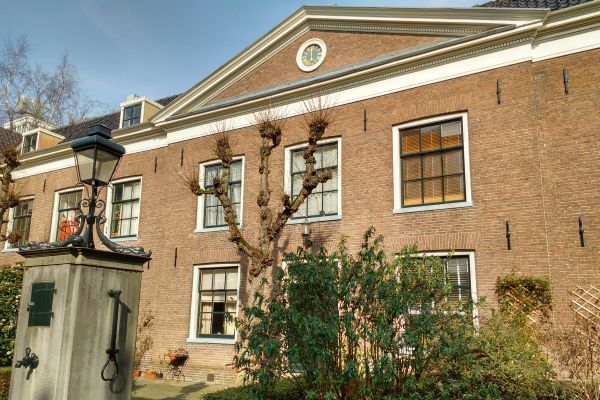
1ste Weteringdwarsstraat 83-95
Open: no, closed for public
If you are lucky the door will be open... This stately courtyard has been owned by Stadsherstel since 1980, which has restored the courtyard. The name refers to the couple Isaac Hodshon (1772-1855) and Isabella Dedel (1778-1865). Originally, the courtyard had 20 houses, intended for the servants of the Hodshon and Dedel families. Nowadays there are 12 houses, which are only rented to single ladies over 60 years old. The special feature of this courtyard is the wide, blind wall on the street side with a gate (with the family crest on it) and the large, almost square windows. In the courtyard is the original water pump, with a beautiful lantern carried by four dolphins. The former toilets are also intact, now used as storage. What is now the garden used to be the bleaching field. Here the laundry was dried and bleached in the sun. Special about this courtyard is the clock with one pointer, which is located in the tympanum of the building, under the ridge of the roof.
Zon's Hofje
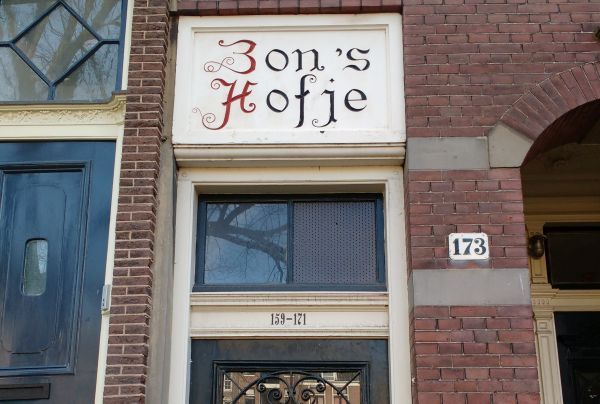
Prinsengracht 159-171
Open: Monday until Friday 8am - 6pm
This courtyard is not noticeable from the street. Here used to be a Baptist Church, which was not allowed to have a facade on the public road. The long corridor, formerly no more than a gap between the houses, was called the Sonnegang, and later the Noachsgang. The Vereenigde Waterlandsche and Vlaamsche Gemeente held its services in the church "De Zon" on the Singel. As the second "meeting location" she also owned "De Kleine Zon" on the site of the current Zon's Hofje. In 1720 this location was sold to the Frisian Municipality of the Mennonites, who baptized the church "Arke Noach". Later, the Frisian Municipality united with De Zon, making Arke Noach redundant. In 1755 it was decided to create a courtyard here, but it was not until 1764 that the permit was completed. In 1800, the courtyard was expanded with a new wing and in 1882 with a few more houses, until it accommodated 32 women. The residents were unmarried, members of the Mennonite Congregation in Amsterdam for at least three years and 50 years or older.
Claes Reiniersz. Hofje
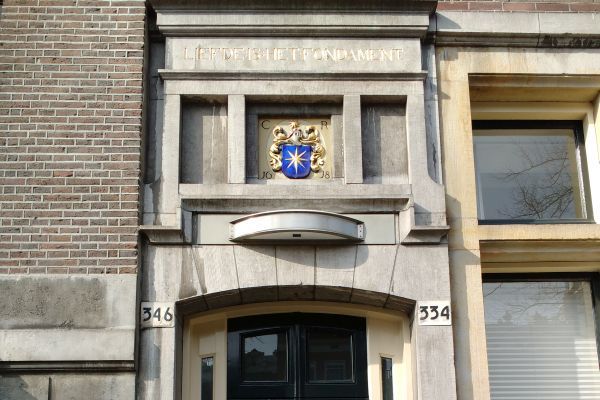
Keizersgracht 334-346
Open: no, closed for public
This courtyard is slightly different from the other courtyards, since in 1618 it was founded for not entirely inexpert Roman Catholic Women. Although it is indicated on the map of Balthasar Florisz (about 1625) as "Weduwenhof" unmarried women could also claim one of the 18 houses in this courtyard. The women who moved in at the time paid two to three hundred guilders upon entering and were then able to live for free. In 1866, the administration of the courtyard was transferred from the descendants of the founder to the regents of the R.C. Old Poor Office. The homes were now made available to eligible single women at a cost of just guilders per month. Incidentally, according to the R.C.O.A.K. financed from equity.
Hofje van Brienen
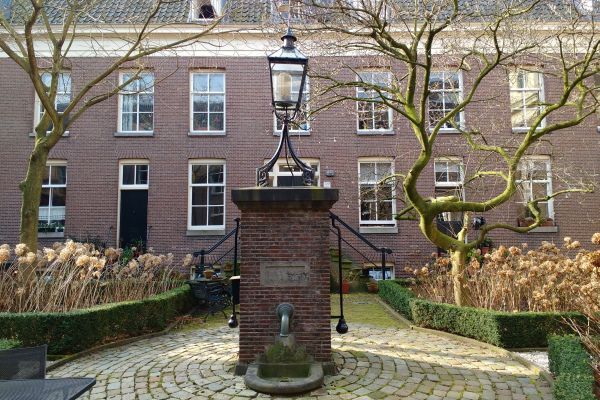
Prinsengracht 89-133
Open: Mon until Fri 6am - 6pm, Sat until 2pm
In 1797 Arnaut van Brienen bought a house, warehouse and brewery to merge into a courtyard. He called the courtyard "Van Brienen's Gesticht Hofje De Star" where De Star refers to the name of the brewery. Architect Abraham van der Hart took several years to build the courtyard. Mr. Van Brienen only joined that the first stone was laid (April 1804) but died before the construction was completed. Son Willem Joseph van Brienen ensured that the courtyard was completed, after which he drew up the regulations and was the regent for 30 years. In 1806, the courtyard was taken into use by 20 Roman Catholic elderly couples and 6 men. The ground floor was intended for housing and the upper floors were rented out as granaries. Later these were also converted into living quarters. In the 20th century, a number of homes were merged into two-room houses and the rules were relaxed. In the evening the door was still locked, but the residents were given a key. The current owner, Het Oosten housing association, financed a large-scale renovation to ensure that the homes meet current standards. Each house now has two or three rooms and its own kitchen and bathroom. In the middle of the courtyard, where laundry used to dry and bleached in the sun (bleaching field), is now a beautifully landscaped garden. Regents rent the courtyard of Het Oosten and arrange the rental to residents. The courtyard is now for men and women over 45 with a low income. Both married and unmarried couples are welcome and Catholic is not a requirement.
Deutzenhofje
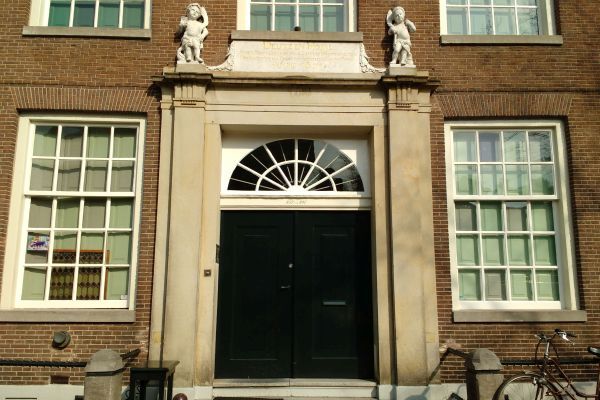
Prinsengracht 855-899
Open: no, closed for public
The Deutzen Courtyard is the largest courtyard in Amsterdam from the 17th century, founded in 1692 from the estate of Agneta Deutz and built in 1694-1695. Mrs. Deutz, after whom this courtyard is named, had bought the heirs for her death for about f 10,000, and appointed the regents. Above the striking gate is the text in white marble: “Agneta Deutz laat hier haar liefde en godsdienst blyken, Den Armen tot troost, tot voorbeeld van den ryken. Anno 1695” which means Agneta Deutz here shows her love and religion, the poor for comfort, as an example of the rich. Next to the text you will find two “putti”: child figures, who carry various attributes, such as the peace palm, censer, fruits and a pigeon. Finally, the weapons of the two husbands that Deutz was widow of are: A weapon with bears by Zacharias van Beresteyn and a weapon with Gerard Meerman's merman. The courtyard consisted of 20 free houses and housed ladies. There is a spacious courtyard with a hall with Doric columns at the end of the central aisle, in which a clockwork from 1703 is hanging.


